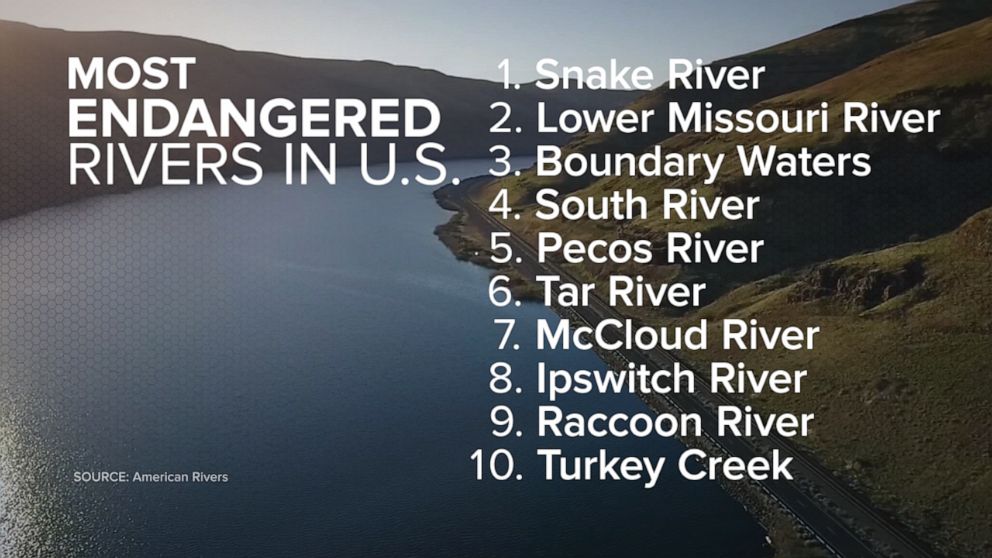Snake River among top 10 most endangered rivers in the US, conservation group says
A series of dams is threatening the local salmon population.
Conservation group American Rivers has named Snake River, which passes through four Western states, the most endangered river in the country due to a series of dams that it says are threatening the existence of the river’s native salmon population.
“They’ve never been closer to extinction than they are today. We’ve got to remove the four dams on the lower Snake River,” said Amy Souers Kober, an American Rivers spokesperson.
The Snake River Basin is home to half of all Pacific salmon in the lower 48 states, the group wrote in a statement.

The fishing industry in the region alone generates $5 billion annually and supports more than 36,000 jobs, according to American Rivers.
“When people don’t come to fish, then the cash registers aren’t ringing and that’s had a pretty big economic impact,” said Mark Deming, of Northwest River Supplies, an outdoor gear and equipment company.
For decades, some environmental activists have been advocating for breaching, or getting rid of, the earthen portion of the dams, on the river. But the dams also serve a purpose for farmers, supporting their 5 million acres of land in southeastern Washington State alone, and aiding in the transportation of 10% of the nation’s wheat exports, which travel by barge, according to the Idaho State government.

Wheat farmer Tom Kammerzell said the river system is environmentally friendly and cost effective.
“There’s a very slim margin of profits in wheat,” said Kammerzell. “It would be impossible to continue to be able to produce [without the river].”
Currently, Idaho Rep. Mike Simpson wants to have $33.5 billion from President Joe Biden’s infrastructure plan earmarked to save the Snake River. His plan includes removing the earthen part of the dams to clear the waterways, replacing the energy produced at the dams, and upgrading the transportation and irrigation services that the dams provide, hoping to make the communities that the river serves, like the farmers, whole until they can supplement shipping methods.



